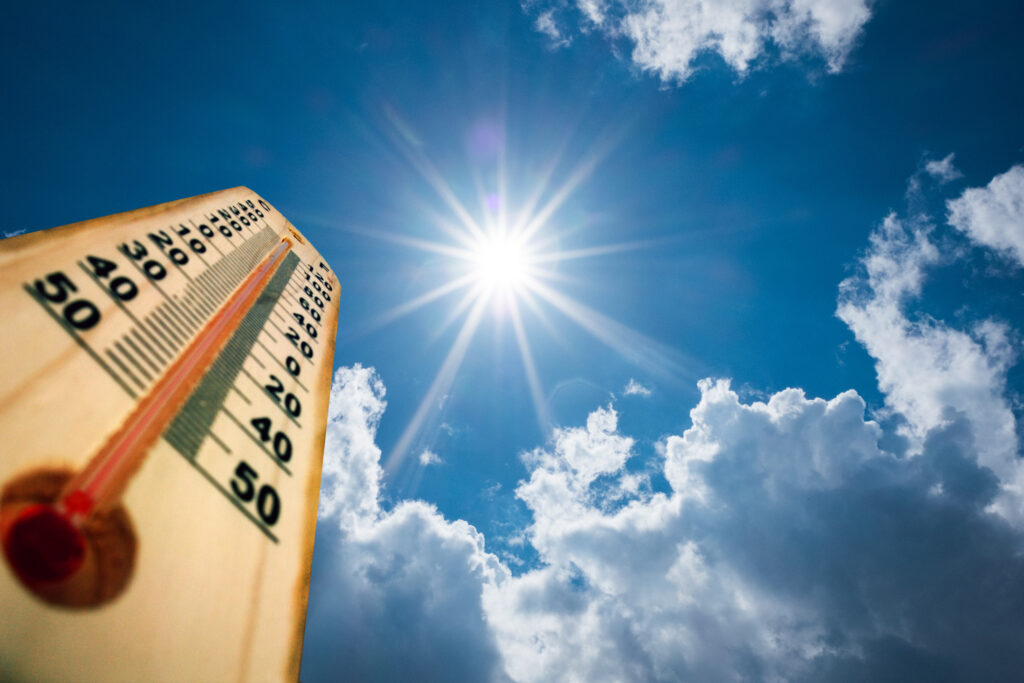The National Weather Service (NWS) warned residents of the interior Northwest to monitor themselves for symptoms of heat-related illness, such as muscle cramps, on Tuesday as extreme heat continued.
The advisory underscored that high temperatures could trigger a spectrum of medical problems—from painful muscle cramps to life-threatening heat stroke—especially among sensitive groups. Public health guidance from federal and medical sources recommended hydration, reduced exertion and early recognition of warning signs to prevent severe outcomes.
Why It Matters
NWS heat-related weather alerts warned that high temperatures can increase the chance of heat-related illness, which can range from heat cramps—painful muscle spasms associated with heavy exertion in high heat—to heat stroke, a medical emergency marked by very high body temperature and changes in mental status.
Meanwhile, cooler-than-normal temperatures are affecting much of the rest of the U.S. this week, with some states seeing high temperatures as much as 30 degrees below average.
What To Know
Dangerously hot temperatures have persisted for days across the Pacific Northwest, with above-average daytime temperatures and limited overnight relief. The most significant temperature anomalies impacted the Pacific Northwest, NWS Weather Prediction Center meteorologist Marc Chenard told Newsweek, particularly for parts of Oregon and Washington.
On Tuesday, the NWS posted on Facebook about the risk of heat-related impact. Most of Washington state was experiencing a moderate to major risk, with pockets of the state expecting extreme risk.
Extreme risk is defined as “rare and/or long-duration extreme heat with no overnight relief affecting anyone without cooling/hydration as well as health systems, industries, and infrastructure.”
The NWS included a link detailing common warning signs and preventive steps with its post. For heat cramps, first aid should “apply firm pressure on cramping muscles or gently massage to relieve spasm. Give sips of water unless the person complains of nausea, then stop giving water.”
Heat exhaustion can be characterized by symptoms such as heavy sweating; weakness; cool, pale, clammy skin; fast, weak pulse; muscle cramps; dizziness; nausea; headache and fainting. First aid efforts should include moving the person to a cooler area, loosening clothing, and offering sips of water.
Heat stroke symptoms can include a throbbing headache; confusion; slurred speech; nausea; dizziness; a rapid and strong pulse; fainting and loss of consciousness. First aid efforts should include immediately calling 911 or taking the victim to the hospital.
“Heat stroke is a severe medical emergency,” the website said. “Delay can be fatal. Move the victim to a cooler, preferably air-conditioned, environment. Reduce body temperature with cool cloths or bath. Use fan if heat index temperatures are below the high 90s. A fan can make you hotter at higher temperatures. Do NOT give fluids.”
Groups at higher risk included infants and young children, people 65 and older, people with chronic medical conditions, and those without reliable access to cool environments.
What People Are Saying
NWS, on Facebook: “Extreme heat will continue in the interior Northwest today and begin waning tomorrow and especially late in the week. Children, the elderly, and those with chronic illness are especially vulnerable to heat exposure. Learn the signs of heat-related illnesses at weather.gov/safety/heat-illness.”
NWS Spokane, in an extreme heat warning: “Hot temperatures will increase the risk of heat-related illnesses. Heat of this magnitude affects anyone without cooling
and hydration as well as health systems and industries.”
What Happens Next
Heat will begin to dissipate on Wednesday, with most of Washington state expecting a minor or moderate risk of heat-related impact by Thursday. People in the impacted area should monitor local weather forecasts and be prepared to act should they notice dangerous heat-related symptoms.
Read the full article here
